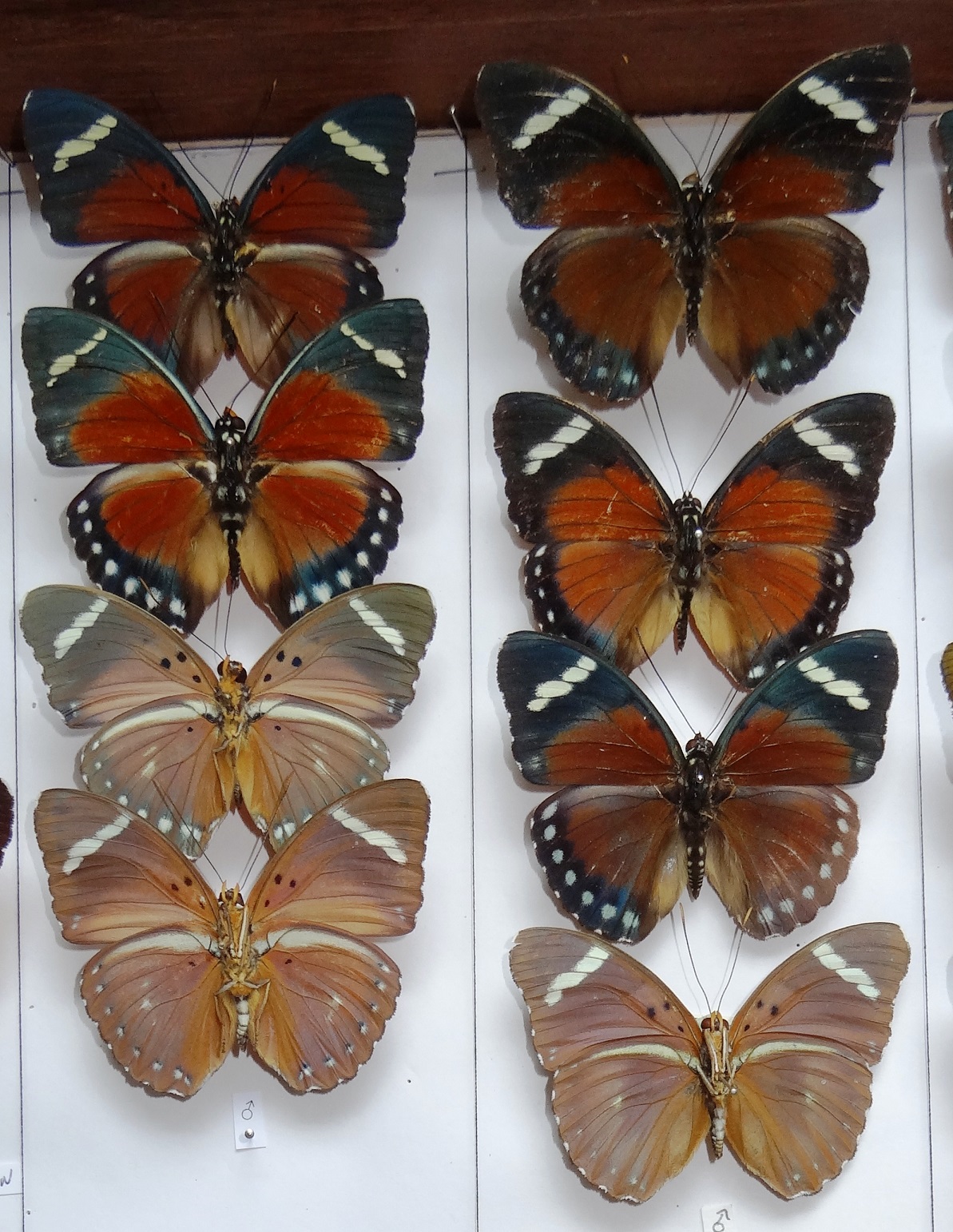Page 1 of 1
Euphaedra
Posted: Mon Jun 26, 2023 7:16 am
by Cabintom
This one has me stumped. Thoughts?
-Strong FW apical green sheen
-FW sub-apical band relatively wide
-FW cell about half black
-HW black border relatively the same width the whole way round the wing
-Veins aren't very black as in some species
-Ventral surface relatively unmarked (though that may not be significant)


Re: Euphaedra
Posted: Mon Jun 26, 2023 7:18 am
by Cabintom
The closest I could think of is rattrayi, but this would be well out of range, and I believe rattrayi is a darker species as well.
Re: Euphaedra
Posted: Mon Jun 26, 2023 9:57 am
by Cabintom
Here's a second one. I believe this is likely
E. ochracea.


Re: Euphaedra
Posted: Mon Jun 26, 2023 11:59 am
by Chuck
I know nothing of Euphaera Tom, but love the posts!
Re: Euphaedra
Posted: Mon Jun 26, 2023 12:41 pm
by adamcotton
I agree with Chuck completely.
I wouldn't know how to distinguish any of these. Hopefully someone knowledgeable will reply, as I would be interested to know what people think.
Adam.
Re: Euphaedra
Posted: Thu Jul 13, 2023 5:35 am
by Cabintom
No one with thoughts, eh?
Re: Euphaedra
Posted: Fri Jul 14, 2023 12:03 pm
by Chuck
Tom, YOU are the expert, LOL. You keep digging up these odd and obscure Euphaedra from new locations, and opening cans of worms.
Do you have access to a freezer? Reason I ask, if so you could pull a couple legs of each specimen and freeze them for later genetic analysis.
Re: Euphaedra
Posted: Fri Jul 14, 2023 1:49 pm
by mcheki
Definitely a difficult group.
J Hecq says that E rattrayi is very common in Kivu and Uganda (Lambillionea . Vol 91. No 3- September 1991), and also mentions a subspecies coeruleomaculata.
This first picture shows some specimens from Western Kenya (Kakamega) that I have identified as E rattrayi coerulomaculata. I have no Kivu specimens that I have determined as E rattrayi.

- DSC00781 3.JPG (329.46 KiB) Viewed 6100 times
Re: Euphaedra
Posted: Fri Jul 14, 2023 1:51 pm
by mcheki
Secondly a photo taken of part of my drawer showing the same rattrayi males as in the above picture in the right column, with a similar species E alacris males in the left column. These latter alacris specimens are from Kivu.
I will leave this subject here for the moment and see if I can add more regarding E ochracea later.

- DSC00781 2.JPG (650.85 KiB) Viewed 6100 times
Re: Euphaedra
Posted: Sat Jul 15, 2023 9:34 am
by Cabintom
Chuck wrote: Fri Jul 14, 2023 12:03 pm
Tom, YOU are the expert, LOL. You keep digging up these odd and obscure Euphaedra from new locations, and opening cans of worms.
Do you have access to a freezer? Reason I ask, if so you could pull a couple legs of each specimen and freeze them for later genetic analysis.
Hey now! If I'm what amounts to being an "expert" on
Euphaedra, well, that's disappointing, because I don't feel like I know much. Someone out there ought to invest the time in sorting out the genus.
Your suggestion about freezing legs is an interesting one. I have a chest freezer. I can't guarantee it can stay on 24/7 though. What impact does irregular freeze/thaw events have on the viability of the sample for DNA?
Re: Euphaedra
Posted: Sat Jul 15, 2023 9:37 am
by Cabintom
mcheki wrote: Fri Jul 14, 2023 1:49 pm
Definitely a difficult group.
J Hecq says that E rattrayi is very common in Kivu and Uganda (Lambillionea . Vol 91. No 3- September 1991), and also mentions a subspecies coeruleomaculata.
I think your photos help confirm that my first specimen is not
E. rattrayi. Among other differences, my specimen is a sort of brick red, while
rattrayi is deeper in colouration. My specimen has a green sheen over the black FW apex, in
rattrayi this seems to be more blue.
Re: Euphaedra
Posted: Sat Jul 15, 2023 6:34 pm
by bobw
The best way of preserving legs for molecular analysis is in alcohol, especially if you can't rely on the freezer.





